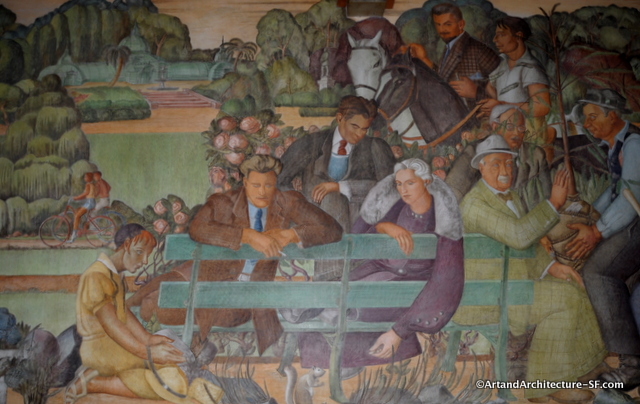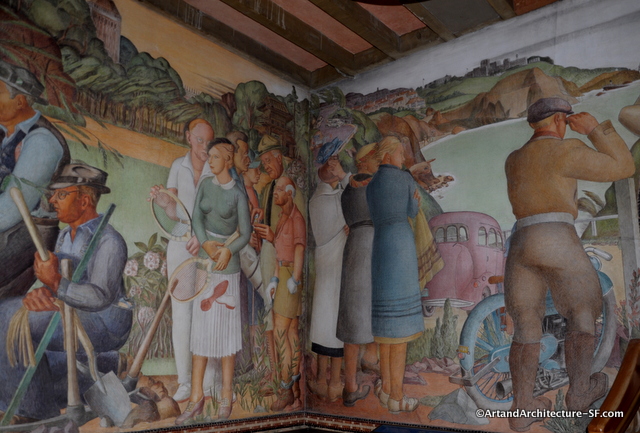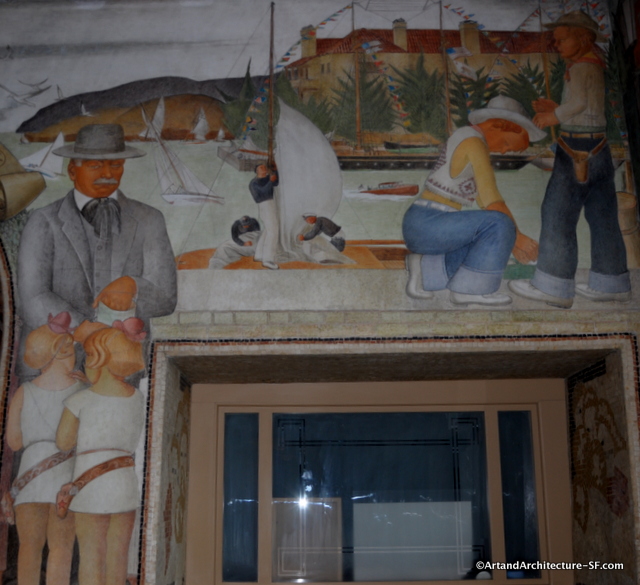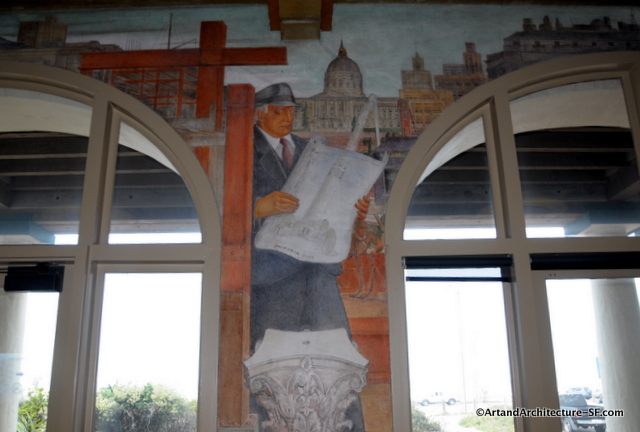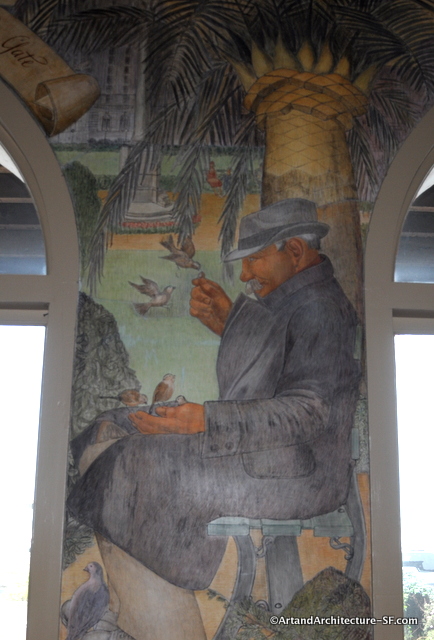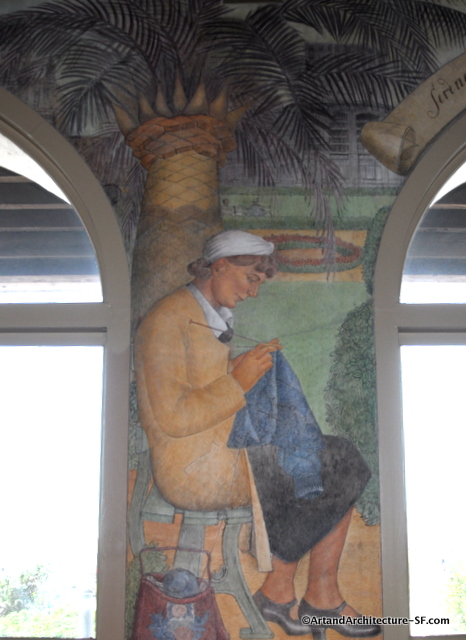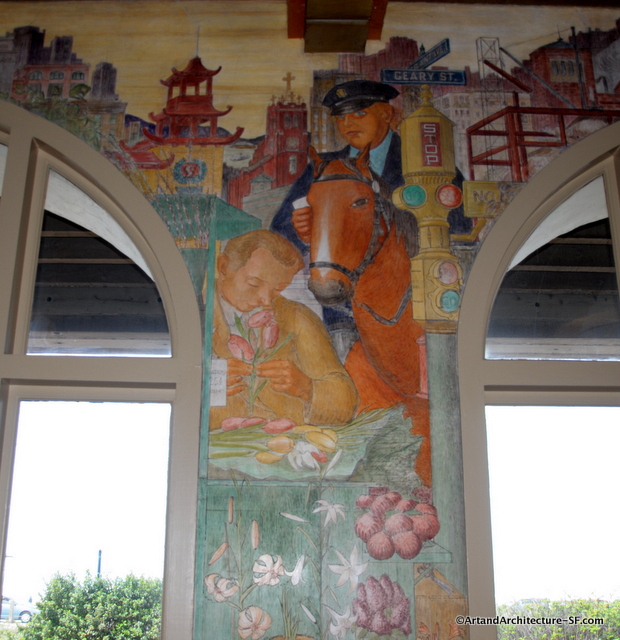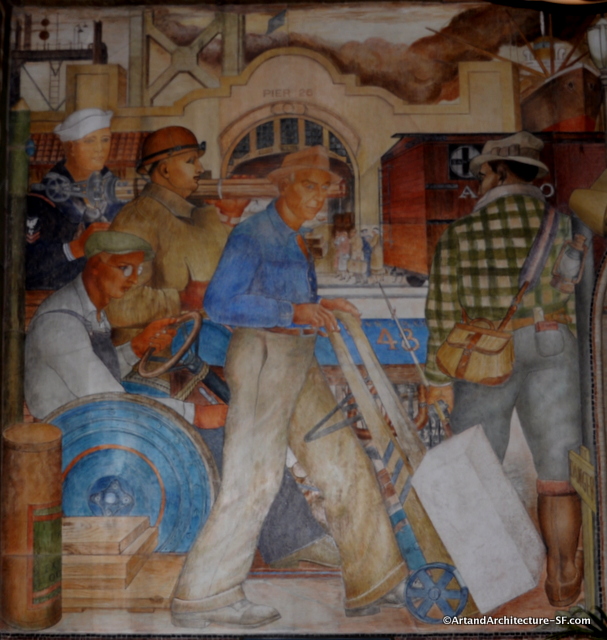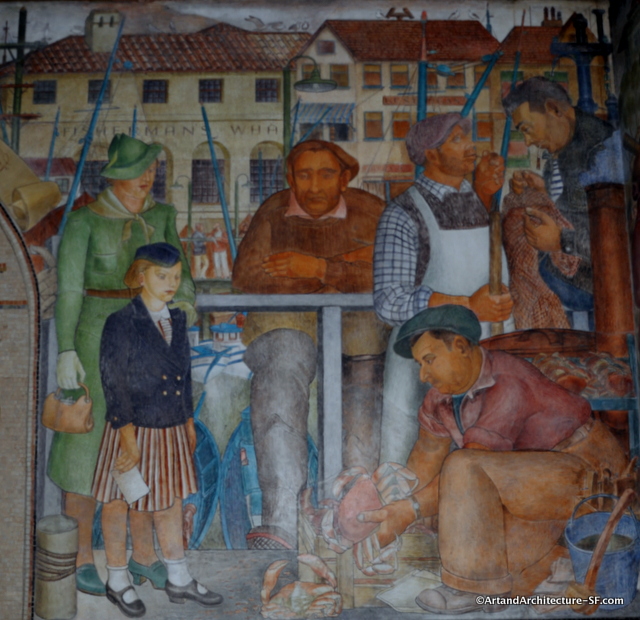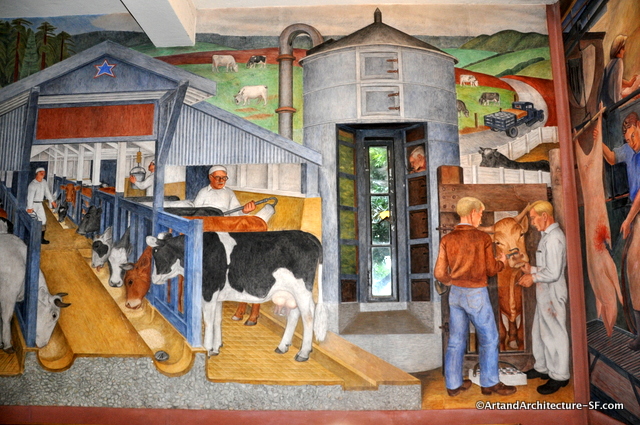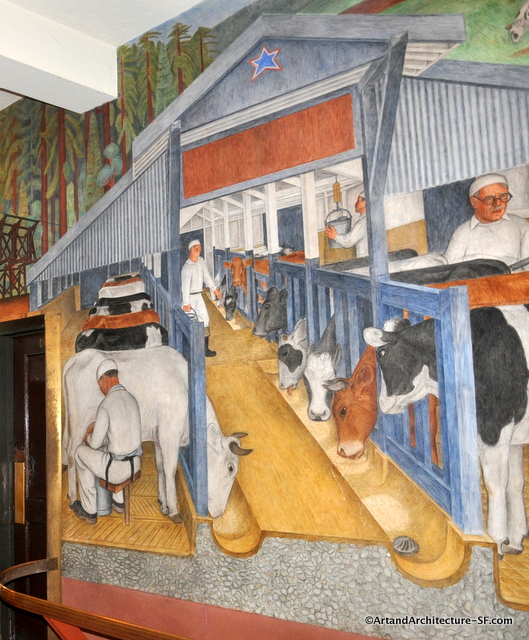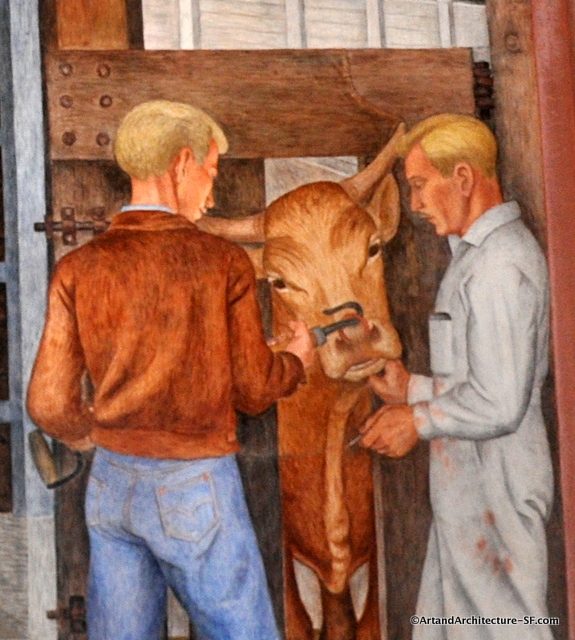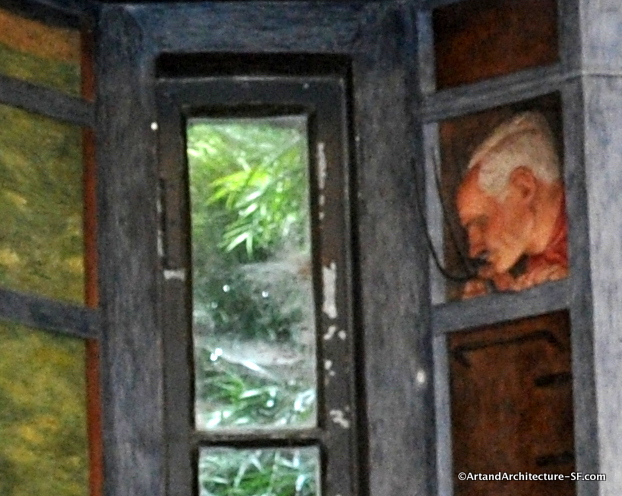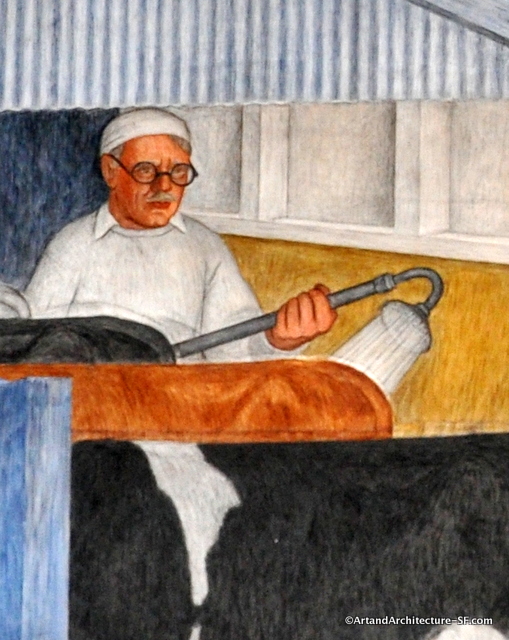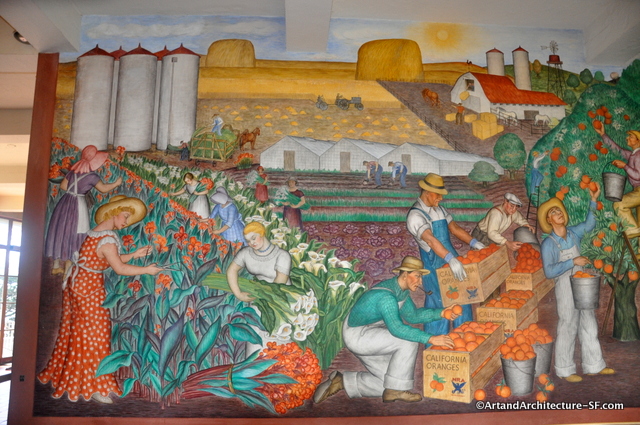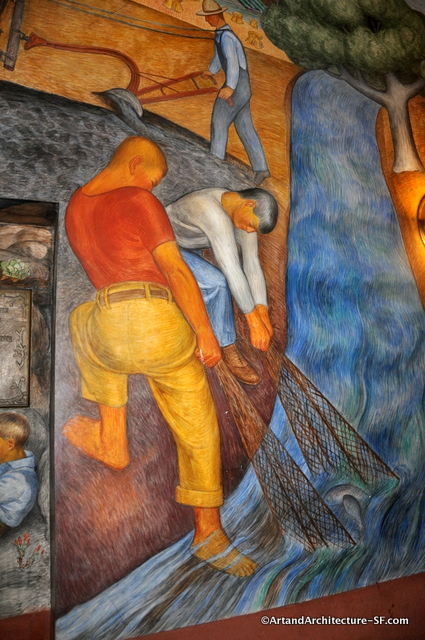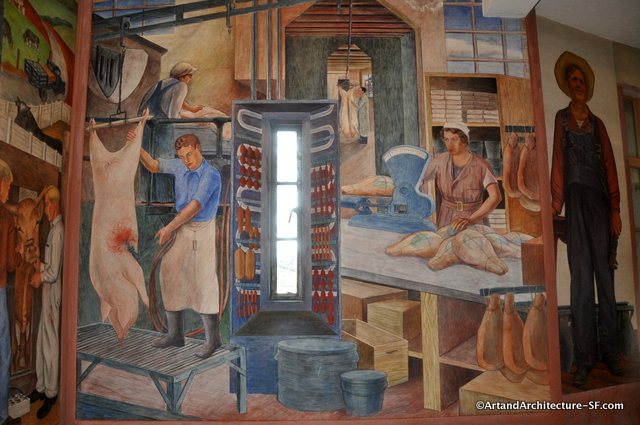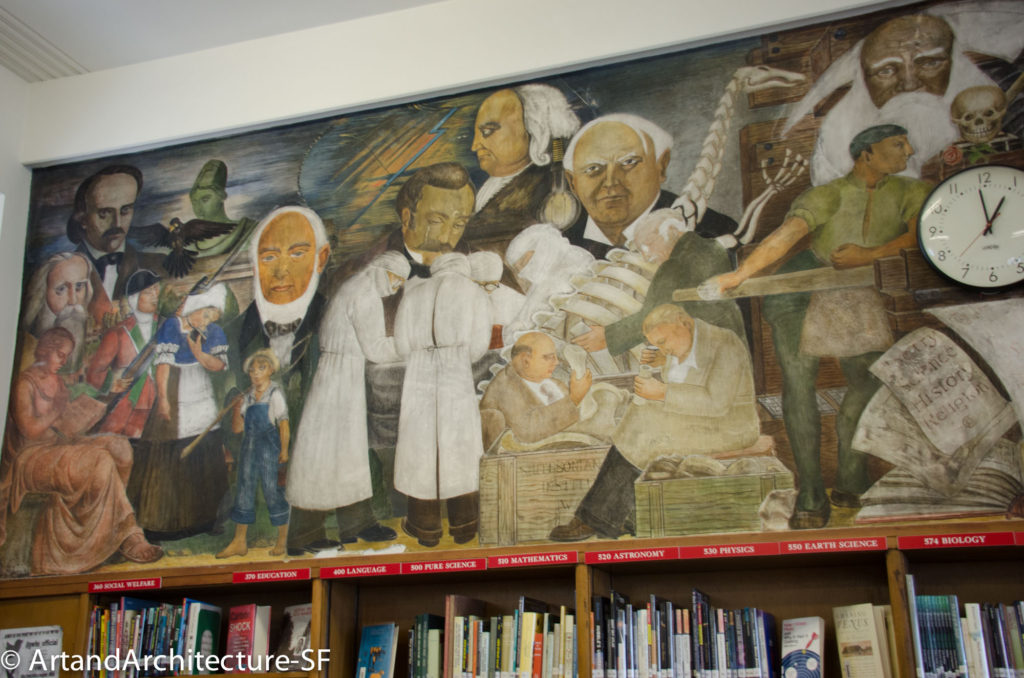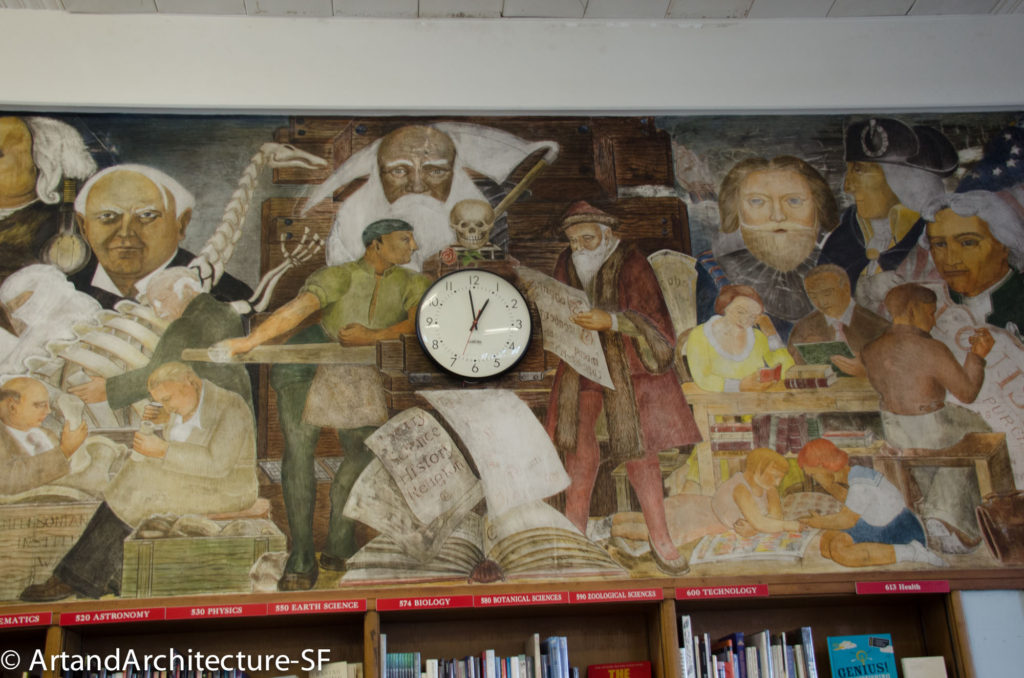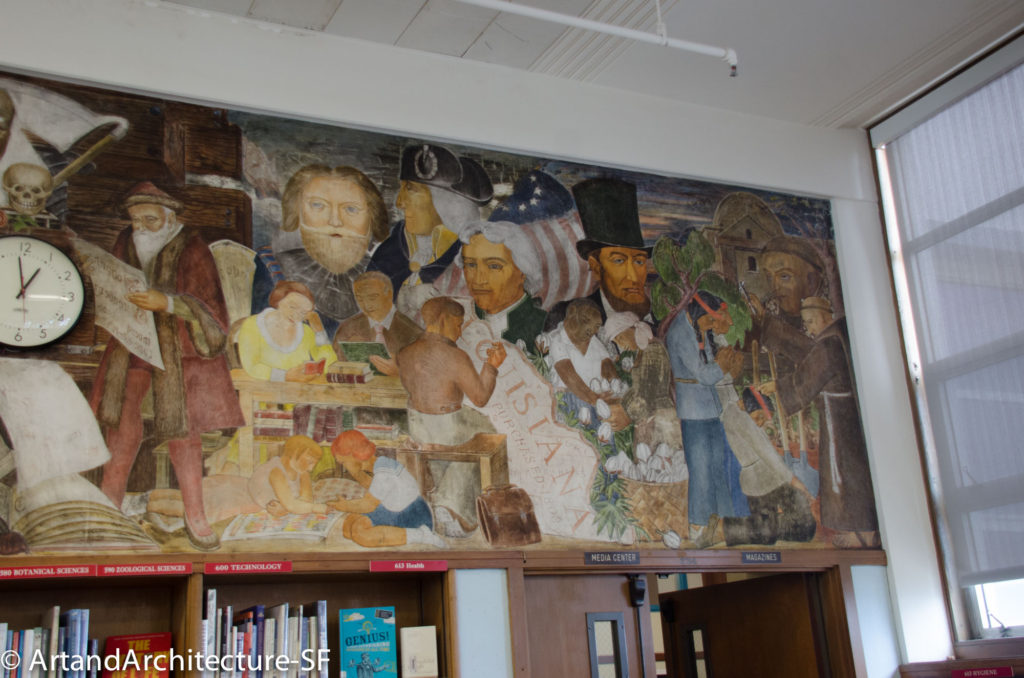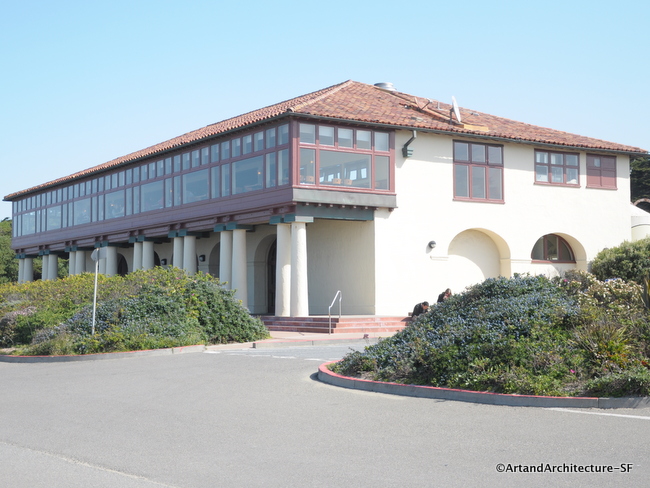
Designed by architect Willis Polk, the Beach Chalet has served as a gathering spot on Ocean Beach for most of its life. With its hipped roof and hand-made roof tiles, this Spanish Revival building survived a takeover by the US Army, the raucous residence of a biker bar and 15 years of abandonment. Today it houses two restaurants, offering visitors a variety of dining fare to accompany the breathtaking views of the Pacific Ocean (more on that later).
The City of San Francisco built the Beach Chalet in 1925, at a cost of $60,000, to provide facilities for beach goers. The ground floor consisted of a lounge and changing rooms, while the upstairs held a 200-seat bar and municipal restaurant.
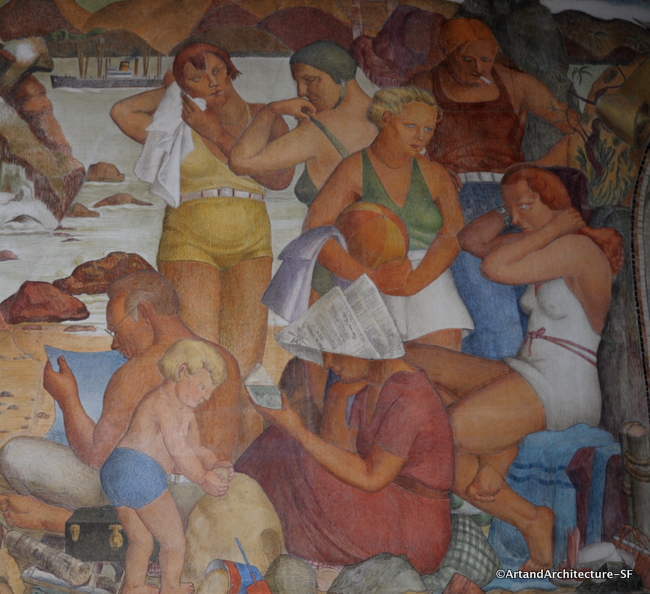 Labaudt’s mural of sunbathers with a backdrop of the Golden Gate Bridge under construction
Labaudt’s mural of sunbathers with a backdrop of the Golden Gate Bridge under construction
In 1936, under the auspices of the Works Project Administration (WPA), Lucien Labaudt was hired to execute 1500 square feet of frescoes on the first floor. California WPA artists believed that their art should be inspirational, and they often painted the world not as it was, but as how they wished it to be. The Beach Chalet murals depict a serene and simple San Francisco life, which contrasted with the harsh reality of what many were experiencing during the Great Depression.
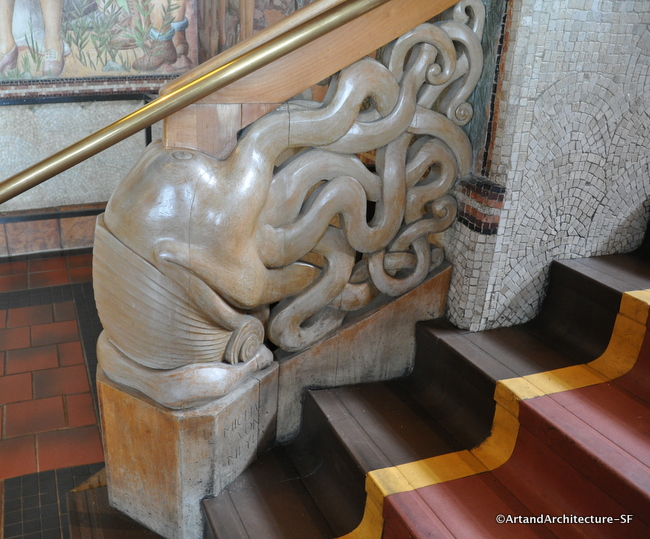 *
*
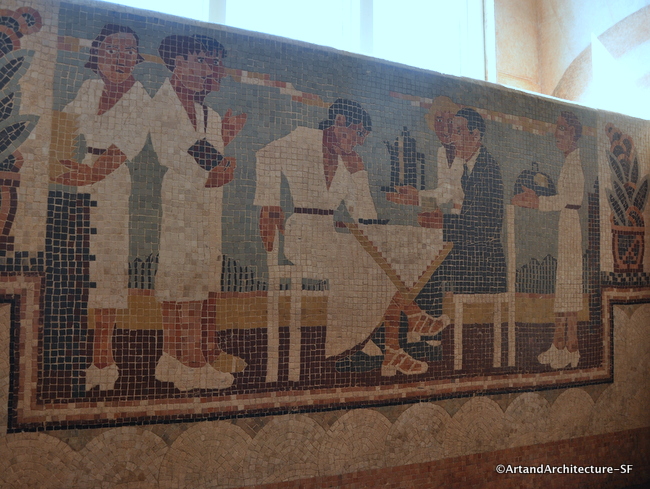
Two other WPA projects can be found at the Beach Chalet: a magnolia wood staircase titled Sea Creatures by Michael von Meyer, and a series of mosaics designed by Labaudt and installed by Primo Caredio.
During WWII the Army commandeered the Beach Chalet for use as its Coastal Defense Headquarters. The military considered San Francisco a potential target during WWII, so several defensive fortifications were established throughout the Bay. The soldiers moved out in 1941, and the Veterans of Foreign Wars (VFW) took over.
 Members of the 78th Coast Artillery pitch camp behind the Beach Chalet. October 1941. (Photo credit: San Francisco Public Library)
Members of the 78th Coast Artillery pitch camp behind the Beach Chalet. October 1941. (Photo credit: San Francisco Public Library)
The VFW used the upstairs as a meeting room, and the downstairs became a biker bar of some disrepute. The VFW held the lease on the building for 15 years. In 1981, when the bar became a public nuisance, the City raised the rent by $500. The VFW moved out, and the building was shuttered.
In 1981 the National Park Service declared the Beach Chalet a National Landmark, but the building was padlocked and surrounded by a chain link fence, left to remain unused for 15 years-with the exception of feral cat squatters and an occasional fire-inciting vagrant.
In 1987 the city allocated $800,000 for infrastructure repairs, including restoration of the artworks. This work was completed in 1989, and yet the building continued to sit empty.
Beginning in 1993 restaurateurs Gar and Lara Truppelli saw the commercial potential of this historic building and led a movement to reopen the chalet.
A $1.5 million grant in 1996 to the Friends of Recreation and Parks (courtesy of the Lila Wallace Reader’s Digest Fund) gave the building its second life. Under the supervision of the architecture firm Heller Manus, an elevator was installed, and the bathrooms were made ADA (Americans with Disabilities Act) compliant. The Beach Chalet opened its doors to the public once again.
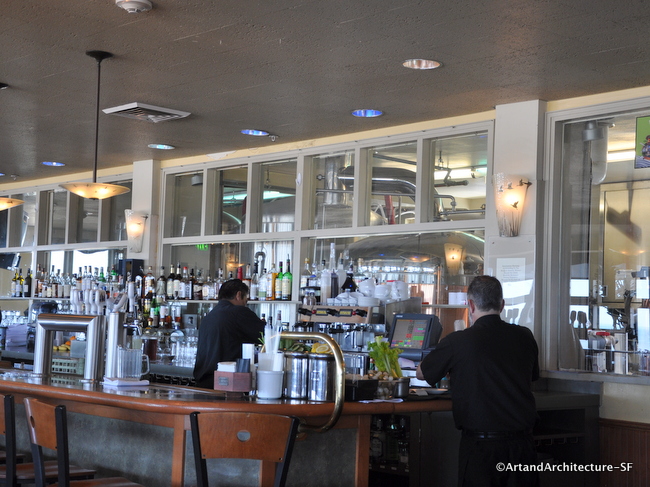 The Brewery sits behind the second-floor bar.
The Brewery sits behind the second-floor bar.
The upstairs now houses the Truppelli’s Beach Chalet Brewery and Restaurant, which makes beer with wonderful local names like VFW Light, Riptide Red and Presidio IPA. The downstairs lobby is open for visitors to enjoy the murals and mosaics, and has a few small displays of San Francisco trivia. Behind this main lobby is a sunny window-filled restaurant, the Park Chalet, serving lighter fare for those not inclined toward pub fare.
The Beach Chalet has shown the resilience of so many San Francisco buildings, surviving abuse by man and Mother Nature for the benefit and enjoyment of future generations.
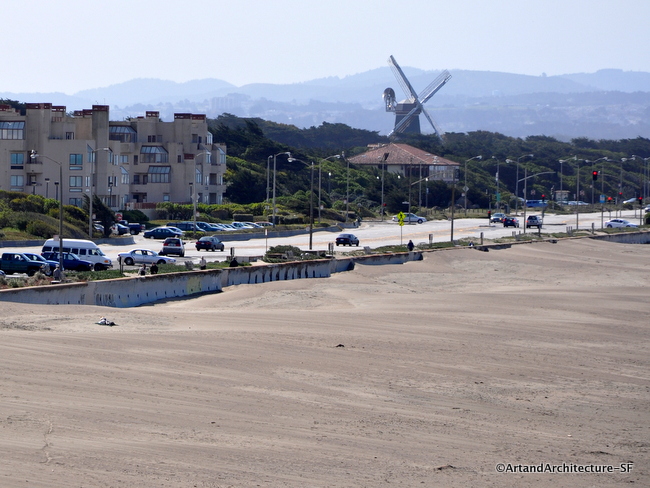
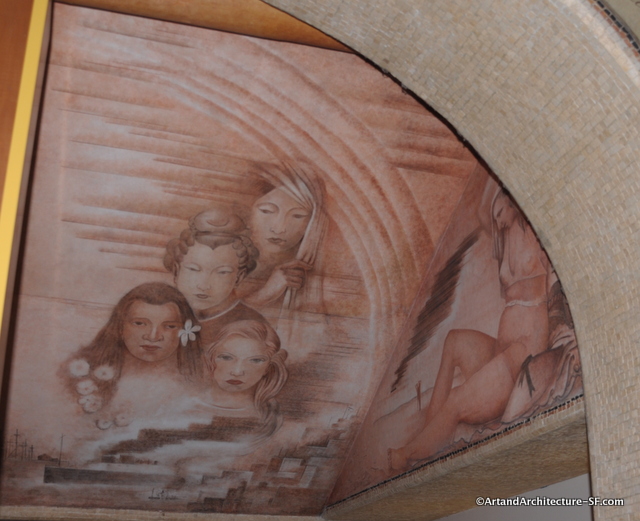 There are a few monochrome murals under the stairway they are also by Labaudt.
There are a few monochrome murals under the stairway they are also by Labaudt.